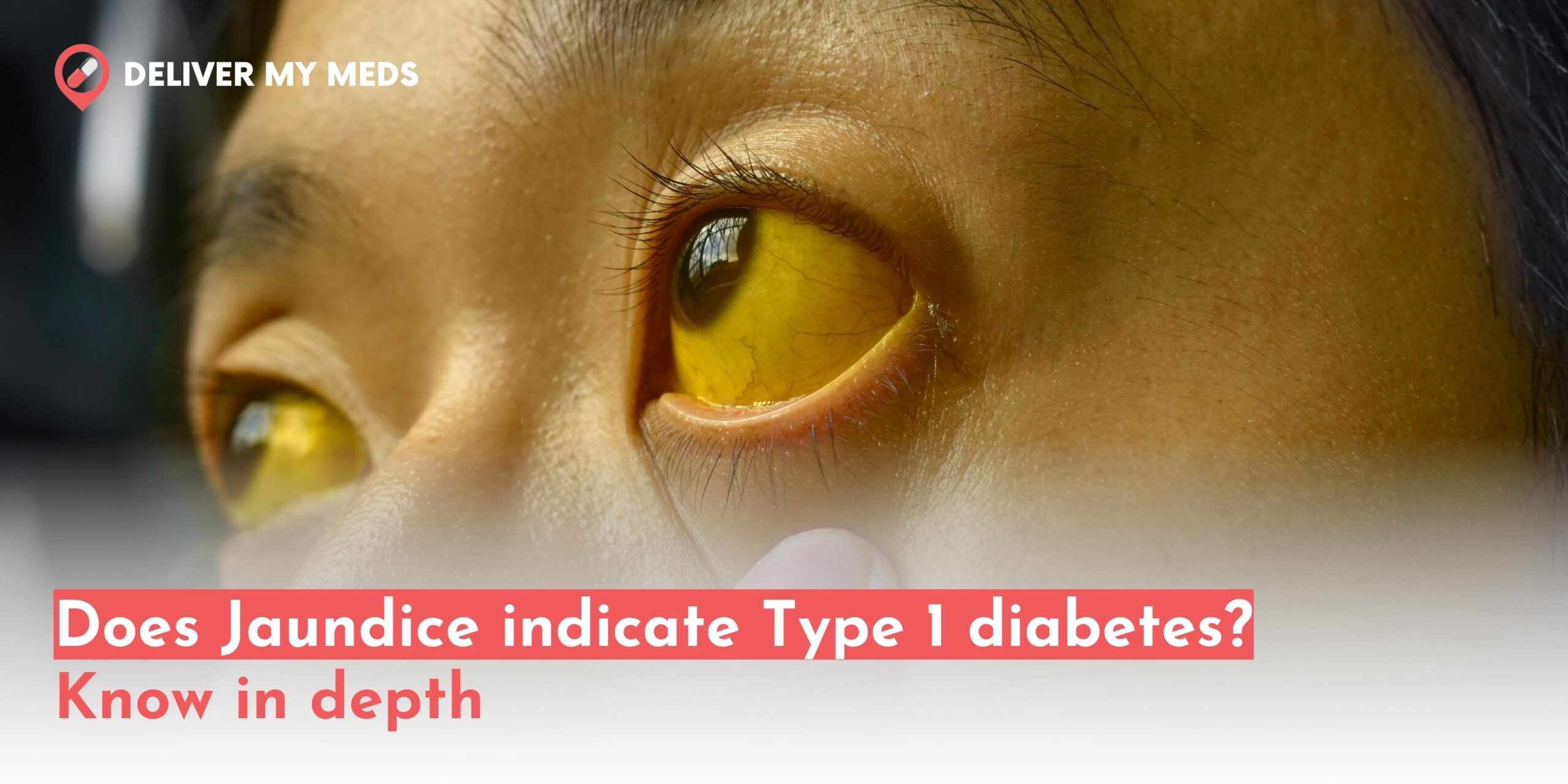
Jaundice is the yellowing of the skin and eyes secondary to elevated blood levels of bilirubin. It is commonly associated with liver disease, biliary duct obstruction, or hemolysis (rapid destruction of red blood cells); typical jaundice can be a baseline for metabolic toxins going wrong. Conversely, Type 1 diabetes is an autoimmune disorder in which the immune system attacks beta cells in the pancreas. Thus, with different causes of origin, Does Jaundice indicate Type 1 diabetes?
Jaundice and Associated Causes
Jaundice occurs due to increased bilirubin building up in the blood. This can happen due to:
- Liver disease (e.g., hepatitis, cirrhosis, fatty liver disease)
- Bile duct obstructions (e.g., gallstones and tumors; pancreatitis)
- Hemolysis (abnormal breakdown of red blood cells)
- Newborn jaundice (labels that result due to incomplete development of the liver)
This excess of bilirubin also signifies hepatic or sometimes hematological disease.
An Overview of Type 1 Diabetes
Type 1 diabetes is an autoimmune disease resulting in immune system dysfunction attacking pancreatic beta cells, which results in insulin deficiency. Without insulin, the body is not able to successfully control blood sugar levels, leading to symptoms such as:
- Excessive thirst and urination
- Unexplained weight loss
- Fatigue
- Blurred vision
- High blood glucose levels
The disease is typical in children or adults starting young, and hence, they require life-long insulin injections.
Does Jaundice indicate Type 1 diabetes?
While jaundice is not recognized as an ordinary sign of Type 1 diabetes, indirect connections can arise for specific conditions as linkage:
1. Neonatal Jaundice and Risks of Type 1 Diabetes
Some studies suggest that neonatal jaundice is a risk factor for Type 1 diabetes developing later in life. One hypothesis for such a condition is that bilirubin toxicity or oxidative stress in infancy could lead to autoimmune responses that subsequently cause diabetes. Nonetheless, this correlation is currently subject to research and remains inconclusive.
2. Liver Complication in Diabetes
Even though jaundice is not a direct signal of Type 1 diabetes, patients with long-term diabetes will be prone to kind of liver complications inclusive of the following:
- Negative fatty liver disease (NAFLD): A common condition in diabetic patients that can progress to cirrhosis and cause jaundice.
- Diabetic hepatopathy: Represents different liver derangement processes in diabetic individuals.
- Biliary complications: Diabetics are predisposed to biliary patient conditions, causing them gallstones that could obstruct the biliary duct, thus causing jaundice.
3. Hemolysis and Diabetes
Some persons with Type 1 diabetes evolve autoimmune hemolytic anemia (AIHA), where the body inadvertently eliminates its red blood cells. Too much levels of hemolysis would lead to jaundice due to an increase in bilirubin levels.
What Should Concern One about Jaundice in a Diabetic?
If jaundice is seen in a Type 1 diabetic, then it could indicate:
- The liver is damaged as a result of diabetes-associated complications
- Hepatitis, either viral or autoimmune
- Biliary obstruction (i.e., gallstones or tumors)
- Hemolytic anemia due to an autoimmune reaction
A healthcare provider must evaluate persistent jaundice for the cause and the subsequent intervention.
Conclusion
Jaundice is not a direct symptom of Type 1 diabetes, but concurrent states, such as neonatal jaundice, liver disease, and hemolysis, allow for the linkage. Additional medical assessment should be encouraged if jaundice is seen in a person with diabetes, given that it is generally not on account of Type 1 diabetes. One should inform healthcare professionals as soon as possible if any new symptoms develop in a diabetic person.



